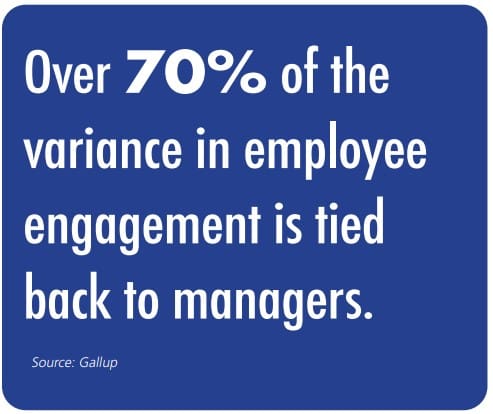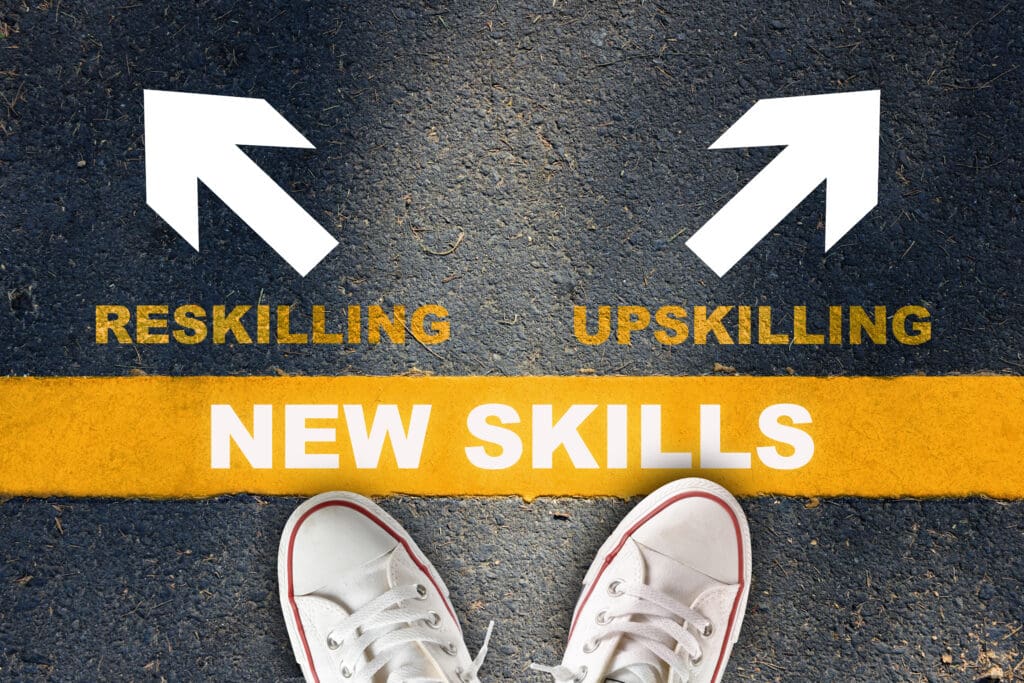Combining micro-learning with micro-actions can deliver a coaching experience to all leadership levels.
By Kevin Kruse
The state of leadership development can be summed up in two statements from researchers at Gallup. First, their research shows that over 70% of the variance in employee engagement is tied back to the manager. And secondly, their Senior Practice Expert Vibhas Ratanjee says, “Leadership development might be one of the most significant loss-making ventures in modern business.”
While billions of dollars are spent annually to train and develop managers around the world, most of that training just doesn’t stick. It’s known as the “knowing-doing gap,” well described in the book of the same name by Stanford professors Robert Sutton and Jeffrey Pfeffer. Just because someone knows how to do something -for example, coaching their team members or regularly providing effective feedback -doesn’t mean they’ll actually do it.
This had led to many significant problems with the way most leadership development is handled today. First, management training is offered as “one and done” in-person events. Whether it’s a pre-pandemic, in-person workshop offered over two days or a series of Zoom virtual sessions distributed over a week, the majority of time and money is spent on the up front learning portion of skill development.
Most learning and development professionals claim they support the “70:20:10” model of development, where 70% of development happens on the job, 20% is learning from mentors or coaches, and 10% is formal learning. Yet a look at most leadership development budgets reveals that 90% is devoted to classroom training.
The root issue is a focus on training instead of behavior change. Instead of obsessing over instructional design strategies, the focus should be on habit design strategies. There are many popular models out there, including Charles Duhigg’s “habit loop,” in which a cue triggers a routine and is followed by a reward. Stanford professor BJ Fogg offers the “B:MAP” in which one must have adequate ability and motivation and then a prompt triggers the desired action.
Regardless of the model, how often do learning and development professionals think of cues and prompts? How often do they think about the rewards of habit formation?
Traditionally, organizations solve the above issues with a simple yet expensive solution: executive coaching. Human coaches rarely delve into content at all, but are experts at achieving transformational behavior change. But with most coaches costing $1,000 to $5,000 or more per month, they are too expensive to give to all managers. Ironically, it’s the most experienced senior executives who are usually assigned a coach, leaving less experienced front-line managers to fend for themselves.
So, how can HR professionals solve these challenges? How can leadership development be transformed from a “loss-making” activity into a true competitive advantage?
Thankfully, with recent developments in artificial intelligence (AI) and mobile technology, there are powerful ways to offer learning in a way that sticks, and replicate the executive coaching experience without replicating the cost.
Josh Bersin, global industry analyst and founder and dean of the Josh Bersin Academy, has been pleading with learning and development professionals for some time to move learning events “into the flow of work.” Employees are famous for saying they’re too busy for training, and yet they learn on their own all the time. They watch YouTube videos, listen to podcasts, read book summaries, send questions to Google, and if they’re under age 25, they even watch instructional TikTok. (Yes, that’s a thing.)
So, the idea is to move leadership development into the flow of work. If the focus is to get leaders to take more of a “coach approach” with their team members, they could be asked to watch a series of five-minute micro-learning videos on the “GROW model.” They could read the book summary of “The Advice Trap.” They could listen to short podcast interviews with their own executives on the benefits of coaching.
But micro-learning will only be effective if it can be accessed quickly and easily, without what user experience designers call “user friction.” Two taps on a smartphone is frictionless. Having to pull up the corporate intranet, navigating to one of several learning management systems, using an archaic search function, and right-arrow clicking through an e-learning module is very high friction.
While micro-learning is necessary, it’s still not sufficient for behavior change. Remember, to form new habits, one must receive cues or triggers that activate the new behavior. To do this, micro-learning needs to be accompanied by micro-coaching. While the former offers things to know, the latter offers things to do.
Continuing with the GROW coaching example, a manager could receive one micro-action a week to help form the habit. This could be as simple as scheduling a goal review meeting with each direct report. One challenge could be to go a whole week without answering questions; instead, only ask questions. It could be asking for a written reflection on what is going well and not well with their shift to a coach-based approach. And most important of all, micro-coaching could include several triggers a week in the form of text messages reminding managers to use the GROW model in their performance feedback.
Shifting to scalable micro-coaching has shown to be popular among leaders, with 93% of all leaders asking to continue the micro-coaching experience after 90 days of use. More important than usage is that it actually shifts behavior and business results:
- A global consulting company achieved a 78% increase in leadership behaviors, as measured by before and after 360-surveys.
- A global technology company achieved a 32% increase in employee engagement scores, as measured by a 90-day pulse survey.
- Managers in a large global accounting firm self-reported a 35% reduction in stress.
For the first time, there is a solution to the knowing-doing gap. By leveraging mobile technology to move learning into the flow of work and AI to hyper-personalize micro-coaching experiences, leaders can form new habits in as little as 90 days.
Kevin Kruse is founder and CEO of LEADx and author of “Great Leaders Have No Rules.”















